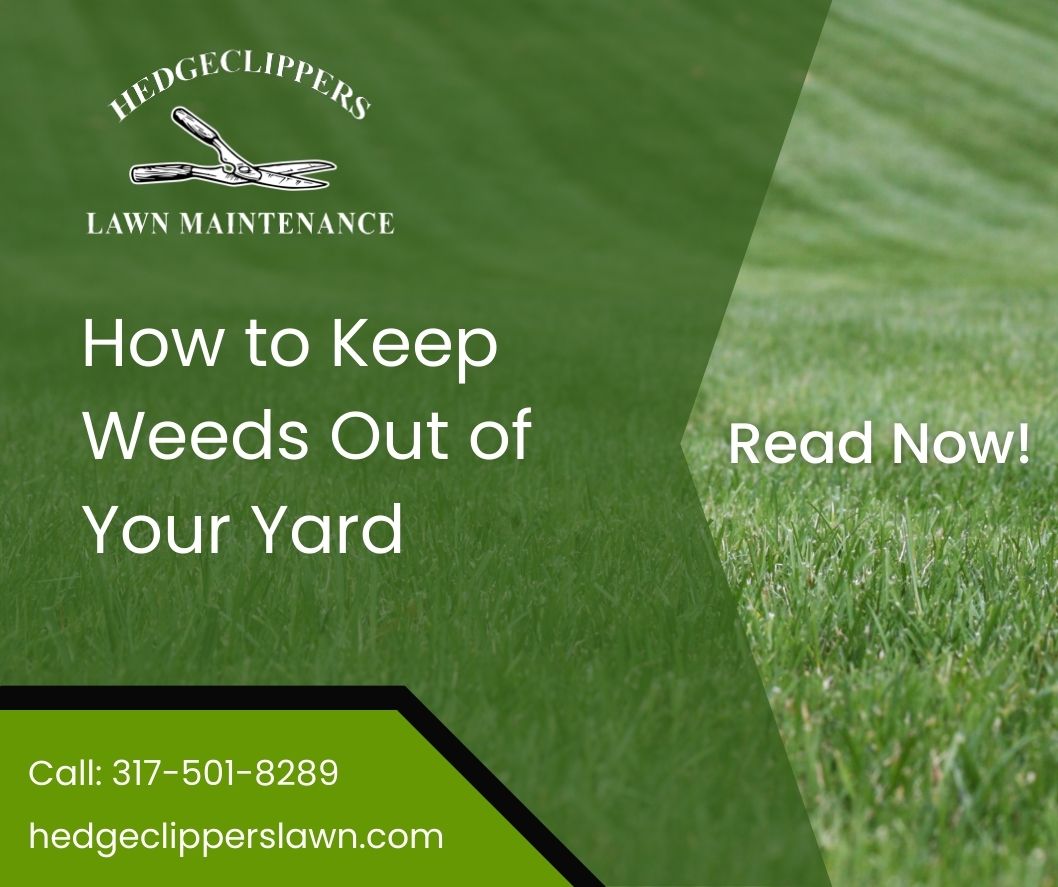Having a well-maintained yard is a goal for many homeowners. However, pesky weeds can often take over and ruin the appearance of even the most meticulously cared-for lawns. If you’re tired of battling weeds and looking for effective strategies to keep them at bay, you’ve come to the right place. In this comprehensive guide, we will provide you with valuable tips and techniques to help you maintain a weed-free yard that you can be proud of.
Understanding Weeds
Before diving into weed control methods, it’s essential to understand what exactly weeds are. Weeds are unwanted plants that grow in places where they are not desired, such as lawns, flower beds, or vegetable gardens. They can be invasive, fast-growing, and aggressive, competing with desirable plants for nutrients, water, and sunlight.
Importance of Weed Control
Weed control is crucial for several reasons. First and foremost, weeds can negatively impact the aesthetics of your yard, detracting from its overall beauty. Additionally, weeds can choke out desirable plants, depriving them of essential resources and stunting their growth. Weeds can also harbor pests and diseases, posing a threat to the health of your entire garden. By implementing effective weed control strategies, you can ensure the longevity and vibrancy of your yard.
Cultural Weed Control Practices
- Mowing: Regular mowing helps to prevent weeds from establishing themselves in your lawn. Set your mower at the appropriate height for your grass type, as taller grass shades out weeds and inhibits their growth.
- Watering: Proper watering is essential for maintaining a healthy lawn while discouraging weed growth. Deep, infrequent watering encourages the growth of deep roots in your grass, making it more competitive against weeds.
- Fertilizing: Providing your lawn with the right nutrients helps promote healthy grass growth, making it less susceptible to weed invasion. Use a balanced fertilizer that meets the specific needs of your grass type.
- Overseeding: Overseeding involves spreading grass seed over an existing lawn to fill in thin or bare spots. A dense, well-established lawn leaves little room for weeds to take hold.
- Mulching: Applying a layer of mulch around plants and in garden beds helps to suppress weed growth by blocking sunlight and preventing weed seeds from germinating. Organic mulches, such as wood chips or straw, are excellent options.
Mechanical Weed Control Methods
- Hand Pulling: For isolated weeds or small infestations, hand pulling can be an effective method. Ensure you remove the entire weed, including the roots, to prevent regrowth. Moist soil makes the task easier.
- Digging: For larger or more persistent weeds, using a garden fork or shovel to dig them out is recommended. Be thorough to remove the entire root system.
- Hoeing: A sharp hoe can be used to slice weeds off at ground level. This method is particularly useful for annual weeds that have not yet produced seeds.
Chemical Weed Control Methods
- Pre-Emergent Herbicides: Pre-emergent herbicides create a barrier in the soil that prevents weed seeds from germinating. Apply them before weed seeds sprout to achieve the best results.
- Post-Emergent Herbicides: Post-emergent herbicides target actively growing weeds. They are effective for controlling existing weed infestations but should be used with caution to avoid damage to desirable plants.
- Selective vs. Non-Selective Herbicides: Choose the appropriate type of herbicide based on your specific weed problem. Selective herbicides are ideal for controlling weeds in lawns without harming the grass, while non-selective herbicides are better suited for areas where you want to eliminate all vegetation, such as driveways or sidewalks.
- Spot Treatments: Instead of applying herbicides over the entire yard, spot treatments can be used to target specific weed-infested areas. This approach minimizes chemical usage and reduces the risk of harming desirable plants.
Organic Weed Control Methods
- Hand Weeding: Manual removal of weeds is an organic and environmentally friendly option. It requires time and effort, but it ensures the complete elimination of weeds without the use of chemicals.
- Mulching: Organic mulches, such as straw, wood chips, or compost, not only suppress weed growth but also enrich the soil as they break down. Apply a thick layer (2-3 inches) around plants and in garden beds to smother weeds and conserve moisture.
- Vinegar and Salt Solutions: A mixture of vinegar and salt can be used as a natural weed killer. Apply it directly to the leaves of weeds, avoiding contact with desirable plants. However, be cautious as this method can also harm soil health if used excessively.
- Boiling Water: Pouring boiling water over weeds can effectively kill them. This method is best suited for weeds growing in cracks or between pavers.
Integrated Weed Management
For optimal weed control, it’s important to adopt an integrated approach that combines various methods. Integrated Weed Management (IWM) involves using a combination of cultural, mechanical, chemical, and organic methods to effectively manage weeds while minimizing environmental impact. By diversifying your weed control strategies, you can achieve long-term success in maintaining a weed-free yard.
Conclusion
A weed-free yard not only enhances the visual appeal of your property but also promotes the health and vitality of your plants. By implementing the techniques and strategies outlined in this comprehensive guide, you can effectively keep weeds out of your yard. Remember to incorporate cultural practices, mechanical methods, and appropriate use of herbicides, whether organic or chemical, based on your specific needs. Embracing an integrated approach to weed management will ensure the long-term success of your efforts.
With the knowledge and tools provided in this article, you are equipped to achieve a weed-free yard that will make your neighbors envious. Say goodbye to pesky weeds and hello to a lush, vibrant, and thriving landscape.
For more information and expert advice on yard maintenance and weed control, call us at 317-501-8289 or email us at [email protected].

